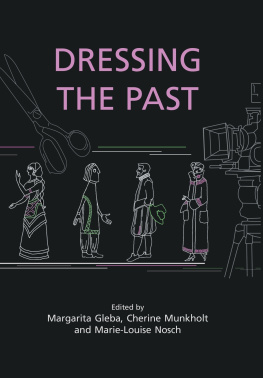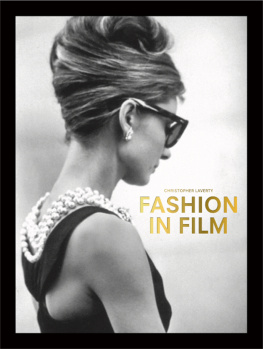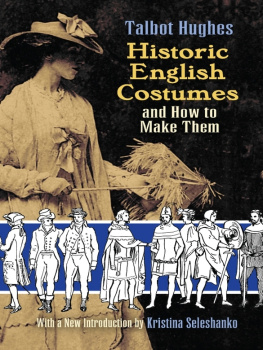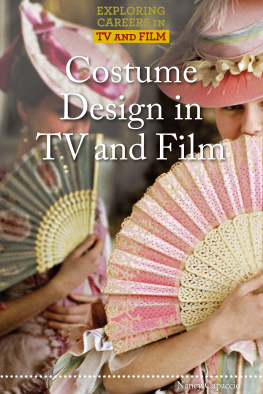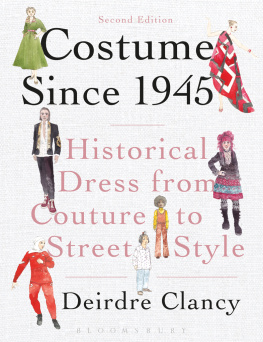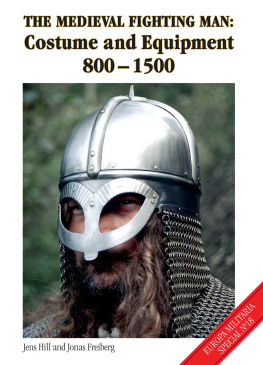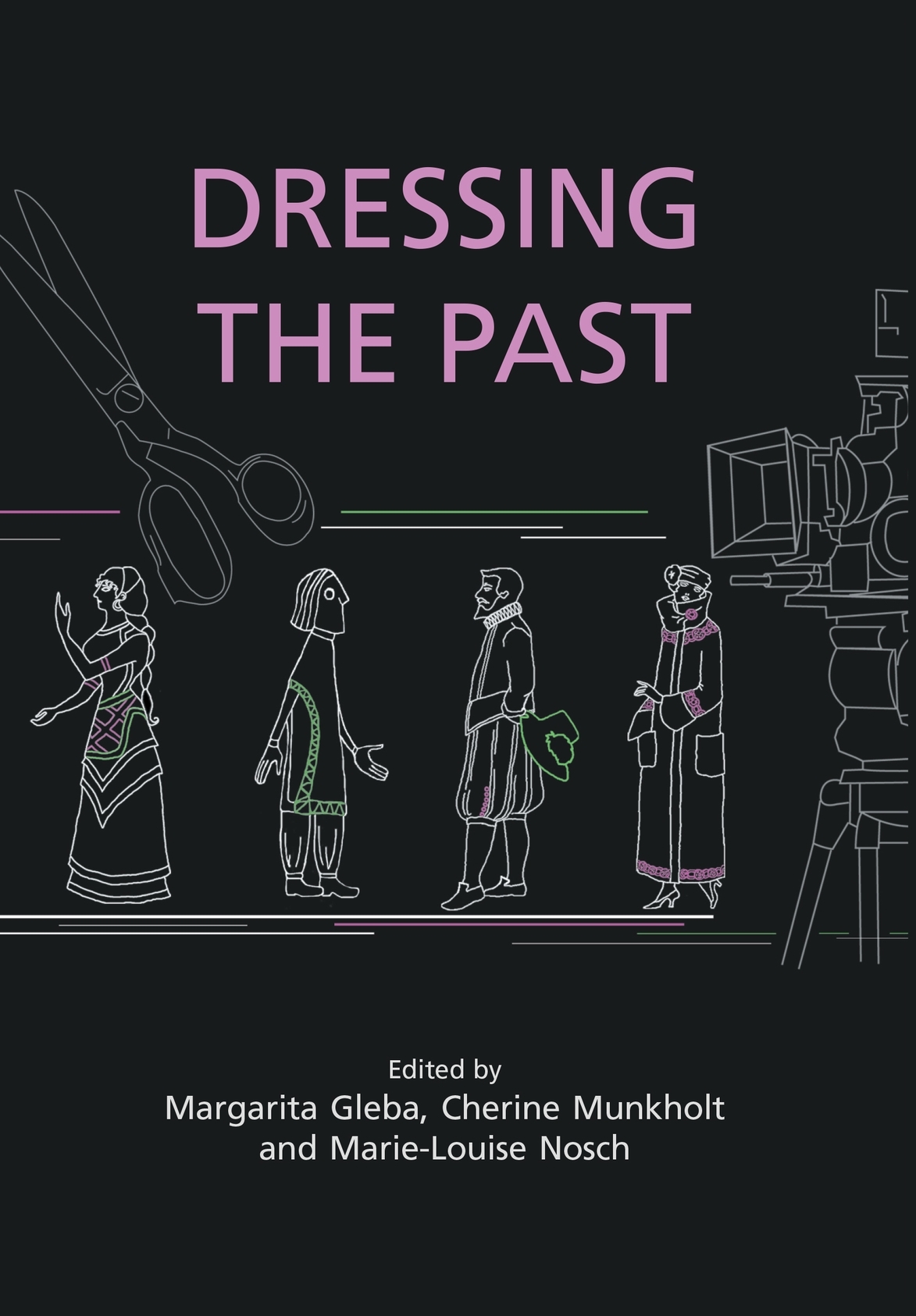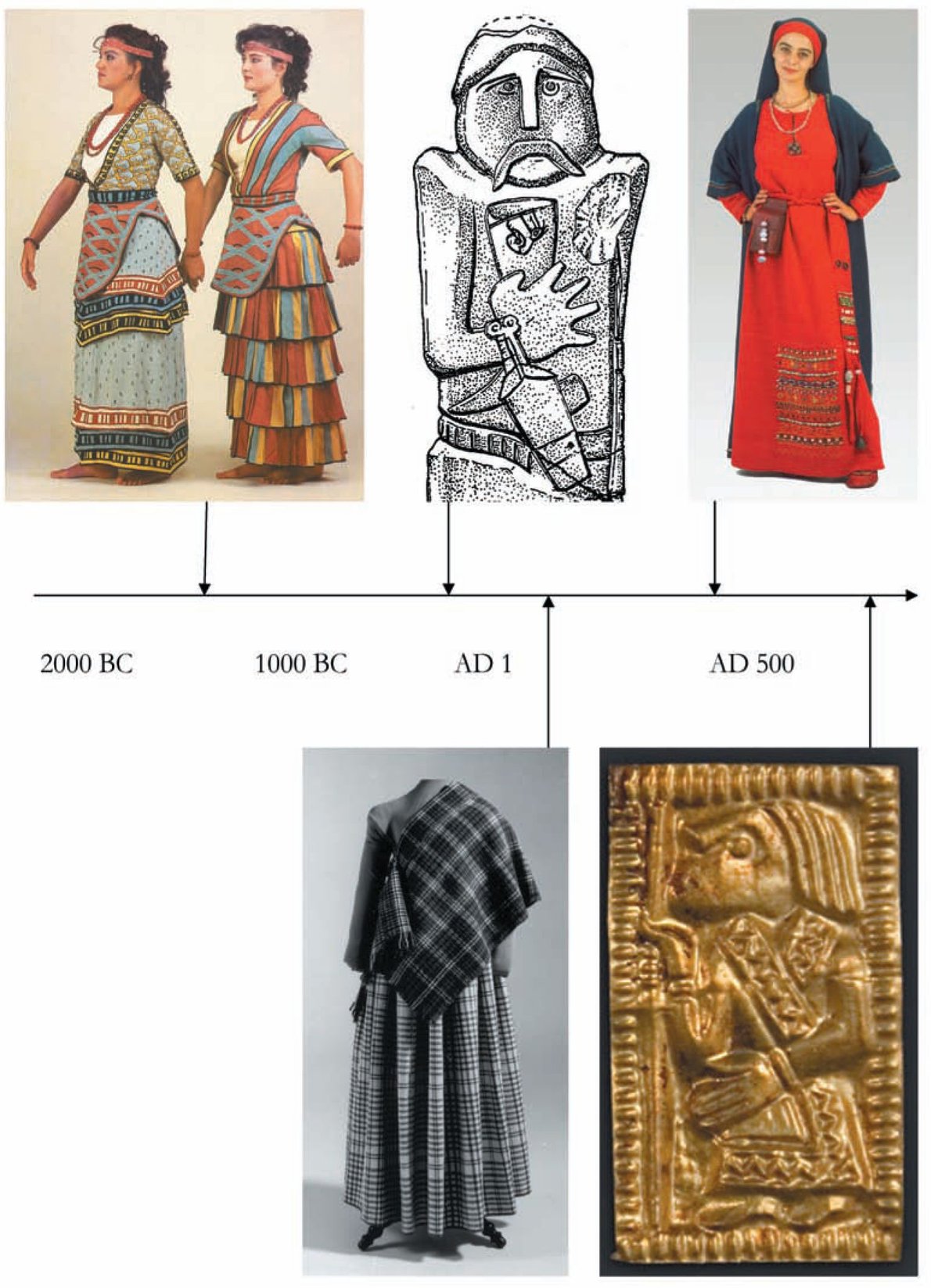Chapter 1
Haute Couture in the Bronze Age: A History of Minoan Female Costumes from Thera
Marie-Louise B. Nosch
In this chapter, the author presents some of the female costumes from Minoan Santorini and uses recent scholarly contributions as the basis of her discussion on the Bronze Age technology available for the manufacture of these costumes. She views the use and representation of these costumes today as stemming from political and cultural agendas.
Keywords: Minoan, Thera, frescoes, colours, design, historiography.
King Minos was a legendary king at Knossos in Crete. He was married to Queen Pasiphae and had a daughter, Ariadne. According to legend, Minos demanded an annual tribute of seven young men and seven young women from Athens. The young people were sacrificed to his son, the monster Minotaur, half man and half bull, who was kept in a labyrinth. The Athenian prince, Theseus, son of King Aegeus, sailed off on a dangerous mission to Crete: to kill the Minotaur and free Athens from the demand for human tribute. His ship had black sails but he promised his father to raise white sails on his return voyage if his mission was successful. On his arrival in Crete, Ariadne fell in love with Theseus. She gave him a ball of thread to follow through the labyrinth. With this thread, he managed to find his way through the labyrinth, kill the Minotaur, and return safely out of the labyrinth again. Joyful over his success, he immediately travelled back but forgot to change his sails. Aegeus, holding watch for his sons ships from a rock high above the ocean, saw the black sails and out of despair over his sons presumed death, threw himself into the sea.
This classical legend contains two references to textiles: Ariadnes thread and the coloured sails. Let us now follow Ariadnes thread into the world of Minoan textile and costume.
The Minoan culture is named after King Minos. The Minoan civilisation is attested in the Bronze Age in present day Greece and Turkey. One of the centres of Minoan culture was the small island of Thera, today Santorini, in the southern part of the Cycladies in Greece (see Map 1). The island was destroyed in the Bronze Age by a volcanic eruption which blew a major part of the island away.
When did this destruction occur? Specialists agree that it was some time between 1700 and 1500 BC, that is, 37003500 years ago. Some scholars, based on the study of ceramic style, date the destruction to 1500 BC; others believe in the dates 16201520 or 17001610 BC, based on the scientific analyses of changes in the carbon isotopes in finds from the excavation; pieces of wood have been used for dendro-chronology and have yielded the dates 16281626 BC; ash layers from the volcanic eruption found in ice-core drillings on Greenland have been dated to 1645 BC. And, recently, analysis of carbon isotopes from a tree trapped in the ash layer has given a destruction date of 16271600 (Friedrich et al . 2006).
The discussion on the destruction date will probably continue. However, for the purposes of this chapter, it is important to note that the destruction of Thera created a freeze-frame in which Minoan life and material culture was preserved. Thus, the destruction gives us a kind of snap-shot of the life of the last inhabitants.
The island of Thera literally exploded when the volcano erupted. In the remaining part of the island, excavations have been carried out, revealing a Bronze Age town. Similar to Roman Pompeii, the excavators dug into private houses and discovered preserved furniture, cooking ware and amazing frescoes on the walls.
The frescoes show men, women and children in elaborate costumes. Here we will focus on the Minoan frescoes representing women and their costumes. Two excellent examples are the Female Figure ().
How far is it plausible to believe that the costumes on the Theran frescoes represent real costumes and are not pure fantasy? Elizabeth Barber, the specialist on Aegean textile and costume, believes that the elaborate and festive female dresses seen on the monuments were probably a development of daily wear (Barber 1991, 315). In the following discussion, I will outline the technological possibilities in Minoan society for producing such garments.
FEMALE COSTUMES
The female Minoan costume seems to be composed of a tight bodice, sometimes open-fronted and with short sleeves. The bodice is decorated on the edges, either with bands or in-woven decorative motifs. The skirt can be bell-shaped or flounced, and is often decorated with either woven stripes or bands. show women and girls wearing sleeved bodices with decorative bands on the shoulders. Tassels hang from the sleeve edges or around the waist. The girls wear what look like wrap-around skirts richly decorated with bands. All the depicted costumes display a wealth of colours and an extended use of bands as decorative elements. Elizabeth Barber writes:
On the whole, the Theran textiles all look readilyeven easilyweavable. To imitate most of these designs, the techniques of choice would be supplemental-warp float for the bands and supplemental weft for the larger cloths, possibly in double-faced or even double-cloth techniques (Barber 1991, 317).

